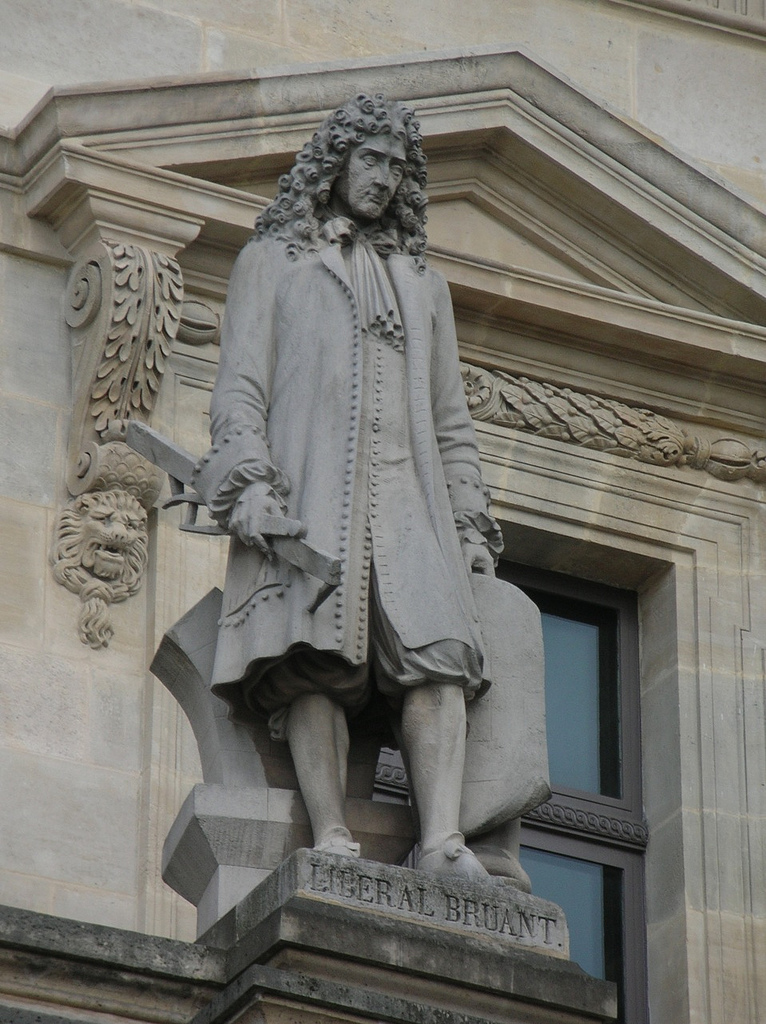LibÃĐral Bruant on:
[Wikipedia]
[Google]
[Amazon]
 LibÃĐral Bruant (''ca'' 1635 â Paris, 22 November 1697), was a French
LibÃĐral Bruant (''ca'' 1635 â Paris, 22 November 1697), was a French
 LibÃĐral Bruant (''ca'' 1635 â Paris, 22 November 1697), was a French
LibÃĐral Bruant (''ca'' 1635 â Paris, 22 November 1697), was a French architect
An architect is a person who plans, designs and oversees the construction of buildings. To practice architecture means to provide services in connection with the design of buildings and the space within the site surrounding the buildings that h ...
best known as the designer of the HÃītel des Invalides
The HÃītel des Invalides ( en, "house of invalids"), commonly called Les Invalides (), is a complex of buildings in the 7th arrondissement of Paris, France, containing museums and monuments, all relating to the military history of France, as ...
, Paris
Paris () is the Capital city, capital and List of communes in France with over 20,000 inhabitants, most populous city of France, with an estimated population of 2,165,423 residents in 2019 in an area of more than 105 kmÂē (41 sq mi), ma ...
, which is now dominated by the dome erected by Jules Hardouin Mansart
Jules Hardouin-Mansart (; 16 April 1646 â 11 May 1708) was a French Baroque architect and builder whose major work included the Place des Victoires (1684â1690); Place VendÃīme (1690); the domed chapel of Les Invalides (1690), and the Grand ...
, his collaborator in earlier stages of the construction. A comparison of Bruant's central entrance to the Invalides, under an arched cornice packed with military trophies with Mansart's ''Ãglise du Dome'', gives a clear idea of the difference between Bruant's High Baroque and Hardouin-Mansart's restrained and somewhat academic Late Baroque.
Bruant was the most notable in a family that produced a long series of architects active from the 16th to the 18th century.
In 1660, Bryuant was the architect chosen for rehabilitations to Louis XIII's old arsenal (the ''SalpÊtriÃĻre''), which was being converted into what would become the world's largest hospice. It is now the PitiÃĐ-SalpÊtriÃĻre Hospital
PitiÃĐ-SalpÊtriÃĻre University Hospital (french: HÃīpital universitaire la PitiÃĐ-SalpÊtriÃĻre, ) is a teaching hospital in the 13th arrondissement of Paris. Part of the and a teaching hospital of Sorbonne University.
History
The SalpÊtrià ...
.
In the Marais
Marais (, meaning "marsh") may refer to:
People
* Marais (given name)
* Marais (surname)
Other uses
* Le Marais, historic district of Paris
* ThÃĐÃĒtre du Marais, the name of several theatres and theatrical troupes in Paris, France
* Marais (c ...
district of Paris, the ''hÃītel particulier'' Bruant built for himself in 1685, at 1 rue de la Perle now houses the Bricard Lock Museum ( MusÃĐe de la Serrure). Its Baroque façade of golden limestone is enlivened by windows set into blind arches that march across its front and busts in oval reserves, all under a richly-sculptured pediment that is pierced by an oval window.
In 1671, he became one of the first eight members of the AcadÃĐmie royale d'architecture
The AcadÃĐmie Royale d'Architecture (; en, "Royal Academy of Architecture") was a French learned society founded in 1671. It had a leading role in influencing architectural theory and education, not only in France, but throughout Europe and t ...
, created by Louis XIV
, house = Bourbon
, father = Louis XIII
, mother = Anne of Austria
, birth_date =
, birth_place = ChÃĒteau de Saint-Germain-en-Laye, Saint-Germain-en-Laye, France
, death_date =
, death_place = Palace of Ver ...
.
See also
*Architecture of Paris
The city of Paris has notable examples of architecture of every period, from the Middle Ages to the 21st century. It was the birthplace of the Gothic style, and has important monuments of the French Renaissance, Classical revival, the Flamboyant s ...
* Les Invalides
External links
* {{DEFAULTSORT:Bruant, Liberal 17th-century French architects 1630s births 1697 deaths Architects from Paris French Baroque architects Members of the AcadÃĐmie royale d'architecture Architects from Versailles